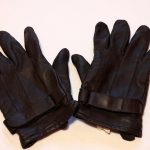New Offender Monitoring Equipment Introduced

The NSW Government has just announced that it is going to be using new, cutting edge offender monitoring equipment to keep track of those on extended supervision orders and parole.
The new equipment includes a range of anklets along with improved tracking software so that those who are considered high risk and in need of monitoring can be watched 24 hours a day.
What features does the new equipment have?
The equipment comes with a number of new features and the design allows for upgrades to keep it in line with developments in technology.
- The anklet itself is considered highly tamper-proof with five times the strength of the previous anklets. It is made with steel bands and Kevlar, and instead of the previous models that had to be worn with a waist unit, the new equipment just uses an anklet.
- The new software being used creates heat maps of which areas are visited most frequently by the person being monitored. It can also show when two people wearing the trackers meet up together, creating a so-called interest zone.
- The software creates dedicated exclusion zones that wearers are not allowed to enter. If they do enter an exclusion zone, an alarm is triggered in the monitoring room and the wearer will get a phone call to inform them that they are breaching their conditions of release. If the call goes unanswered or the wearer ignores the warning and remains in the excluded area, police will be contacted. Exclusion zones can cover playgrounds, day-care centres, pubs and bottle shops. They can also include the home addresses of victims and others under supervision.
- The new technology also supports in-home curfew monitoring, but where the previous version required a landline and a bulky unit that took up a lot of space, this one uses a small electronic beacon.
The equipment will be monitored from a new 24-hour monitoring room based at the Silverwater Correctional Complex in Sydney. This means that wearers can potentially be monitored around the clock, and spot checks can be conducted regularly on those who are considered to be lower risk and those who are on home detention and curfews.
Who will this equipment be for?
To start with, the new advanced equipment will be used for those who are considered to be high risk, mainly those on extended supervision orders and parolees who are already on electronic monitoring in the community. Those who are considered to be lower risk and who are on home detention in the community will also be fitted with the new equipment. It is anticipated that around 485 people will be wearing the new anklets by the middle of this month.
As a means of supporting the increased monitoring, six detectives are due to be seconded for the purposes of investigating and charging anyone who is alleged to have breached the terms of their ESO from data provided by the monitoring.
Does electronic monitoring reduce offending?
Electronic monitoring and GPS devices can’t completely prevent their wearers from offending but it is believed that they act as a powerful deterrent. In the event that a person does commit an offence or a breach of their conditions while being monitored, evidence obtained from the monitoring device can be used against them in court.
As they allow corrective services to build up a continued profile of their patterns of movement, it’s believed that this type of monitoring helps police detect patterns in the movement of wearers which could be indicative of their intention to commit a crime or breach the conditions of their release.
Home detention and parole are generally considered to be attractive alternatives to lengthy amounts of time in correctional facilities, and electronic monitoring is something that allows this to happen.
Being in the community and being able to participate in family life and employment can make a big difference to the likelihood of someone who has been convicted of a crime being able to successfully reintegrate after release, and it reduces the impact of a period of incarceration on the family, as well as the cost to the taxpayer.
Corrective Services Commissioner Peter Severin has admitted that the new electronic monitoring system will not prevent reoffending entirely, but is likely to significantly reduce rates of offending when combined with close supervision and management in the community.
“It’s important the community knows this anklet is not a magic bullet to prevent reoffending but, when combined with the close supervision and management of our Community Corrections officers, it does lower reoffending risks,’’ he said.






